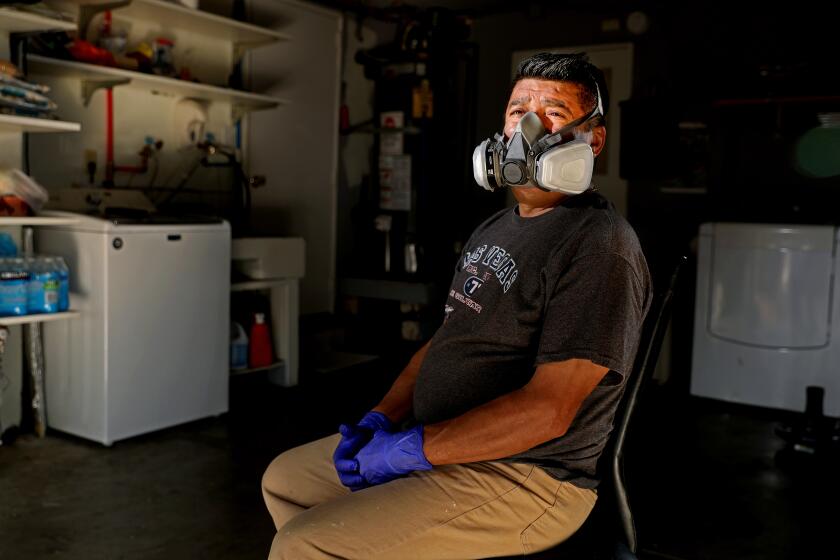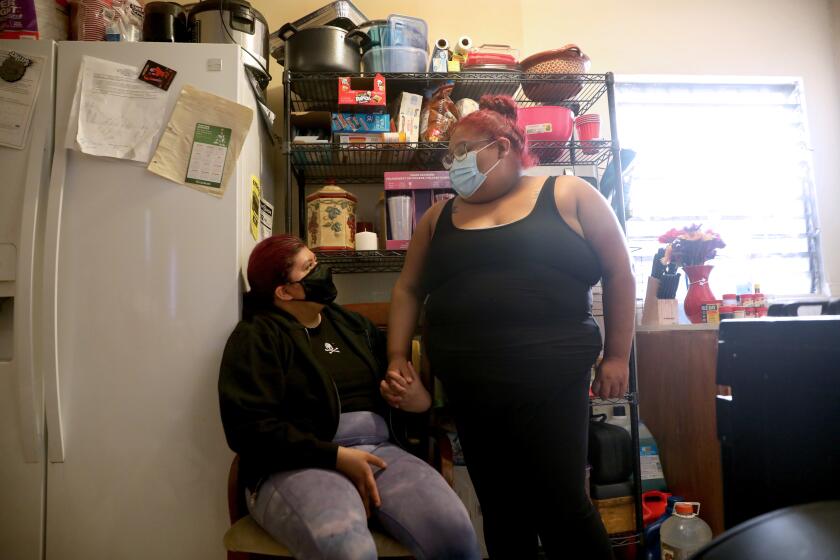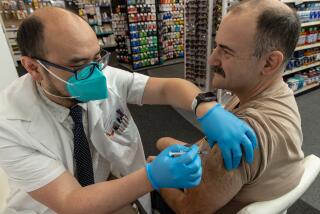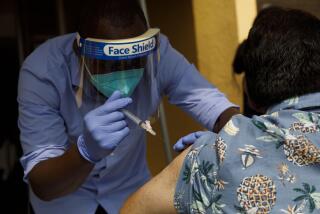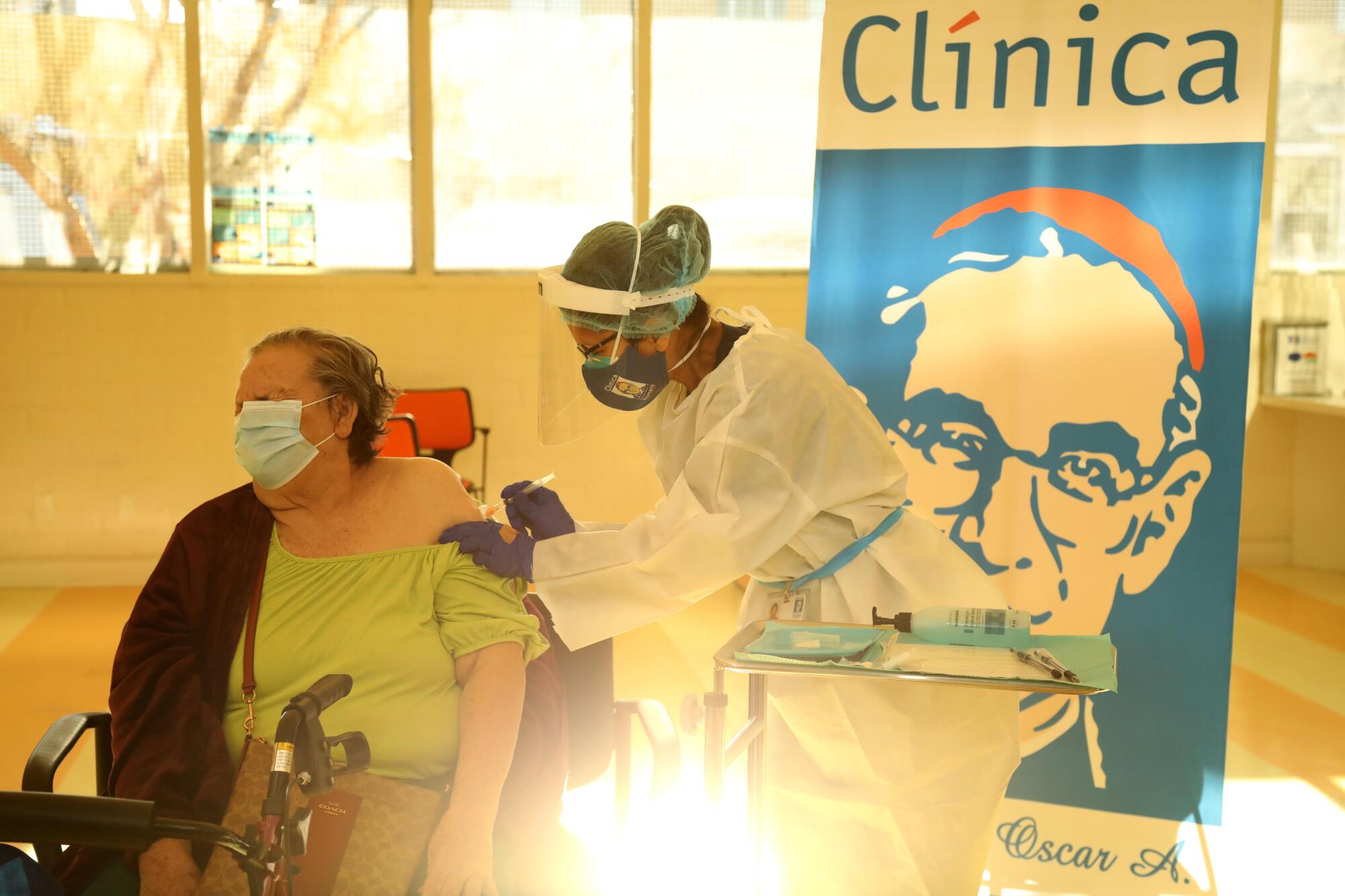
Miguel Angel Murcia said he would have been content to get his COVID-19 vaccine at Dodger Stadium’s mass drive-through vaccination site.
But the 75-year-old doesn’t drive. He doesn’t have family nearby. And he doesn’t have internet access.
So instead Murcia relied on persistence — repeatedly phoning the staff at Clínica Monseñor Romero in Boyle Heights where he’s been a patient for more than a decade.
“When will you have the vaccine available?” he asked.
On Saturday, Murcia’s diligence paid off. He became the third person to become inoculated at the clinic’s first vaccination drive. The community clinic provides health services in Boyle Heights and Pico-Union, serving communities that are at the epicenter of the pandemic — predominantly Spanish-speaking Latino and Indigenous people from Mexico and Central America.
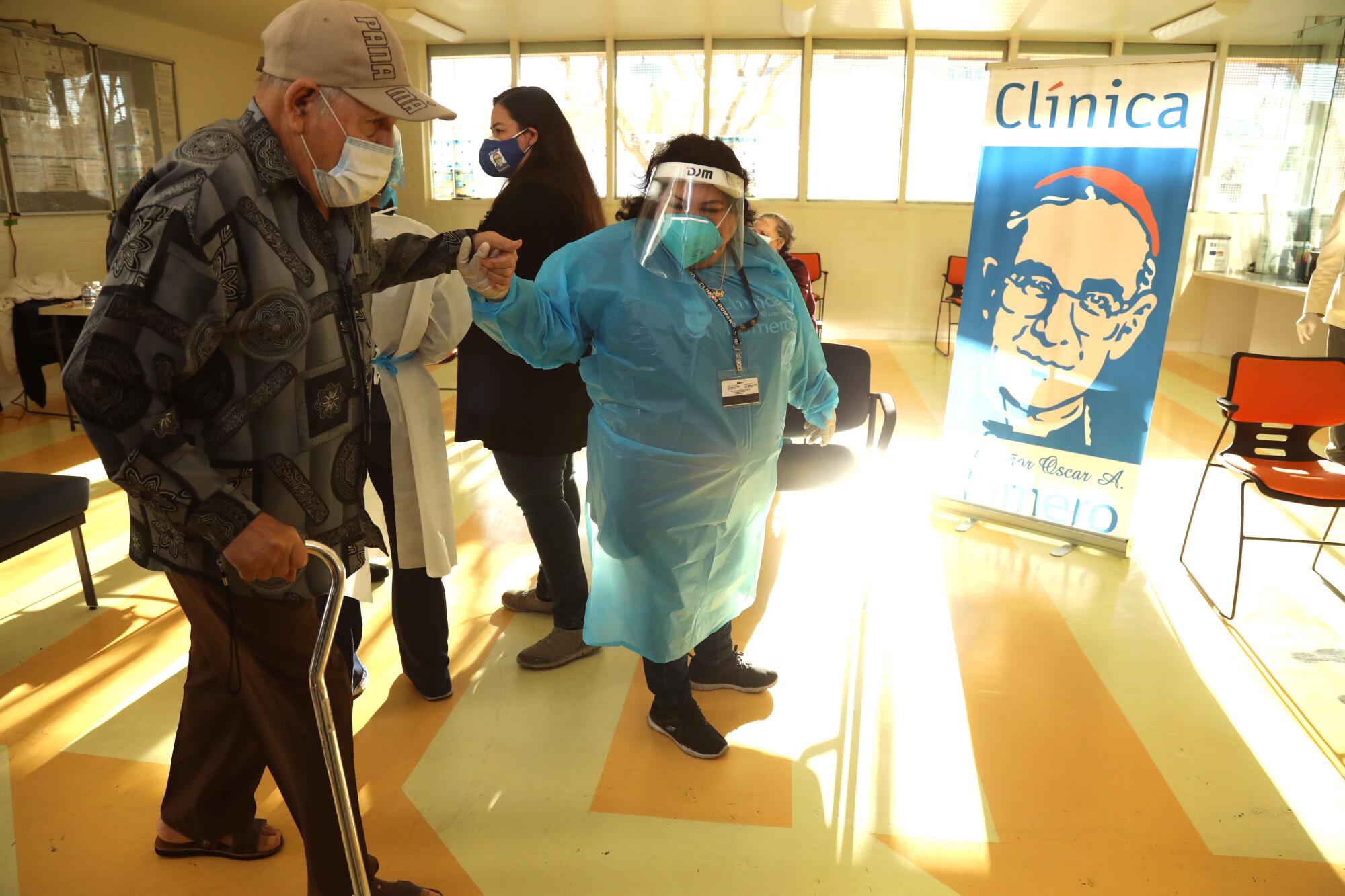
After weeks of waiting, the clinic received a shipment of Moderna vaccines from the Los Angeles County Department of Public Health last month —100 shots for the clinic’s 12,000 patients. For this reason, those eligible to receive vaccines on Saturday were limited to people 75 and older.
But with COVID-19 vaccines in short supply, the decision of how to prioritize immunizations is becoming an increasingly fraught matter, especially in those communities hit hardest by the pandemic.
“How is 100 going to take care of the 12,000 patients and the surrounding community of 1 million?” asked Dr. Don Garcia, the clinic’s medical director. “This is embarrassing.”
In California, Latino residents have been disproportionately affected by the virus. Latinos are an estimated 40% of the state’s population, but represent 55% of its COVID cases and 46% of its deaths from the novel coronavirus.
The number of Latino residents in L.A. County who are dying from COVID-19 daily — on average, over a two-week period — has skyrocketed: 40 deaths per 100,000 Latino residents. That’s nearly triple that of white residents, a segment of the population that sees an average of 14 deaths per 100,000.
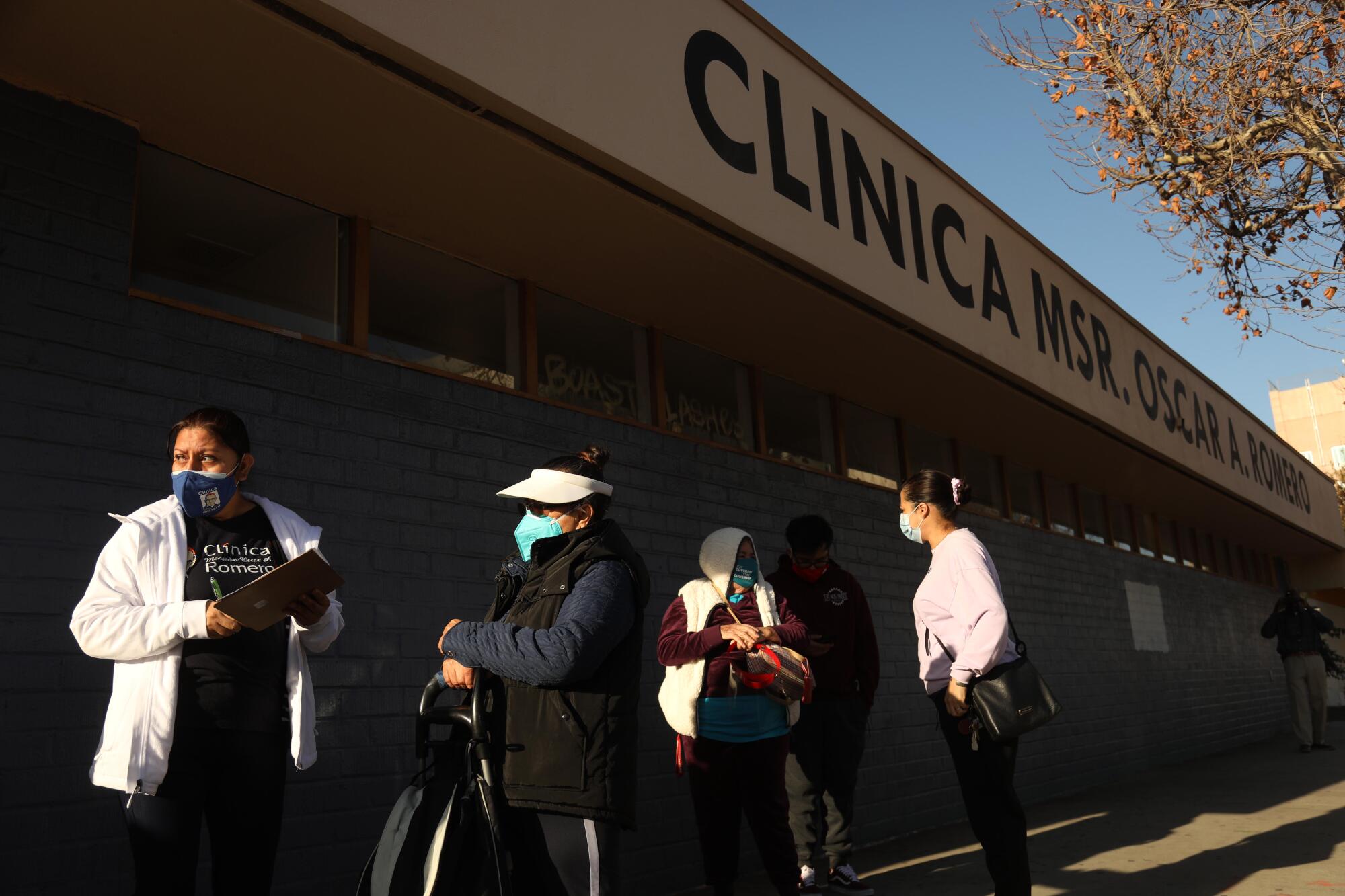
Clínica Romero has two sites, one in Boyle Heights and another in the MacArthur Park area where most of the clinic’s patients are Latino and immigrant families — including many who lack legal status and work in the service industry.
Since March, the positivity rate at the Boyle Heights clinic has been consistently at 40%. That’s more than triple the seven-day average testing positivity rate for L.A. County, which was at 9.99% Saturday morning.
The clinic has performed an estimated 2,500 COVID-19 tests.
“We are in the eye of the storm,” García said. “But nobody is reaching out and responding to my cries of passion and frustration.”
During coronavirus, Americans increasingly rely on migrant workers, many in the country illegally, who have no protections or financial support.
An official with the Department of Public Health did not respond to questions specific to Clínica Romero but instead forwarded a Los Angeles Times story about limited vaccine supply.
Carlos Vaquerano, executive director of the clinic, said he was happy to receive the 100 doses of vaccine and understands the shortages. Still, he said the rollout and distribution of vaccines have not been equitable.
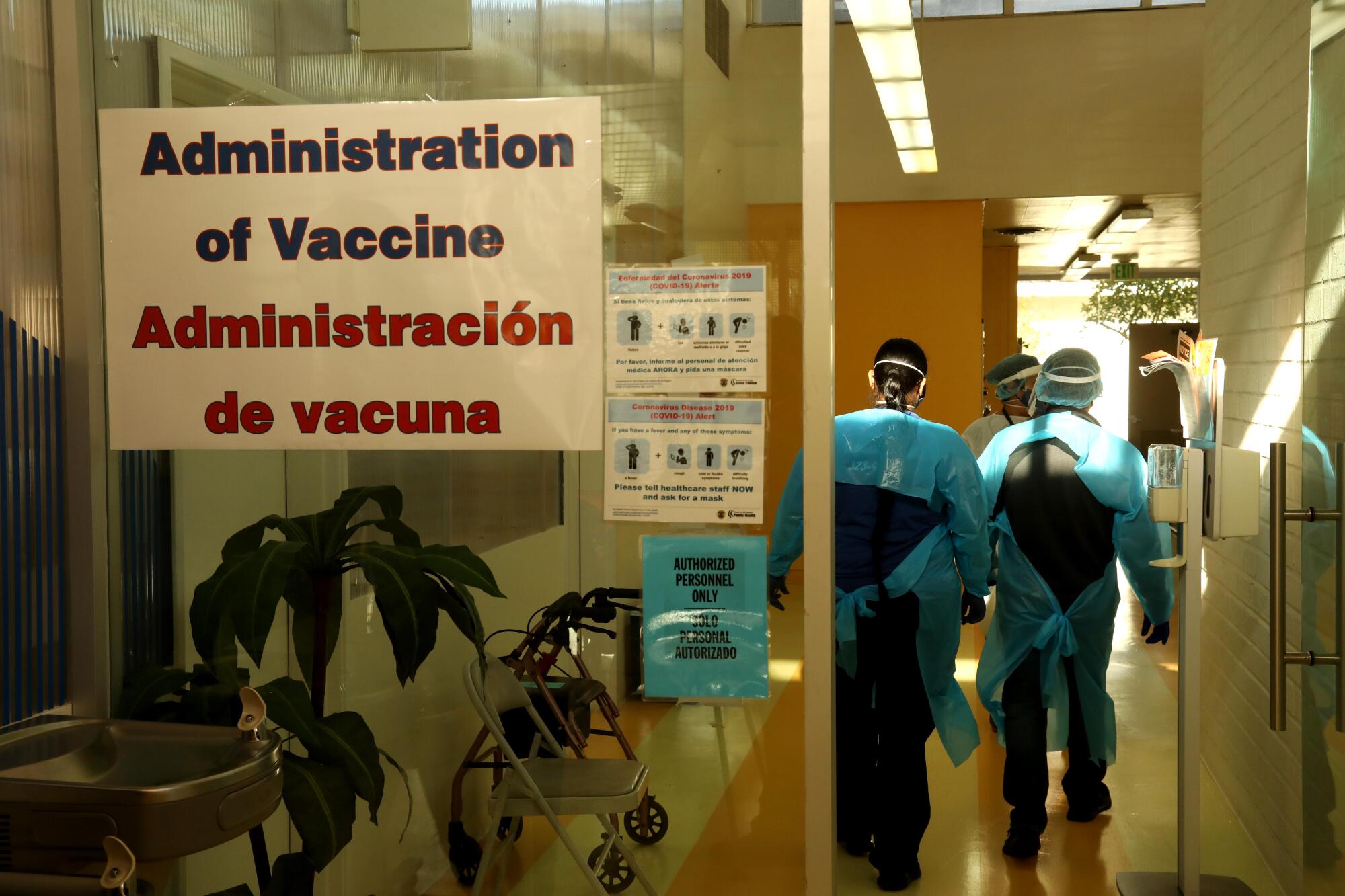
“It’s a matter of fair distribution,” he said. “We serve the most hard-hit community in Los Angeles. They are essential workers who are getting sick and are dying at a higher proportion than anyone else in the county.”
Vaquerano said the clinic’s patients have a lot of challenges and don’t know how to navigate the process of getting vaccinated via a mega-center.
“These people are the ones the clinic has long served and they are relying on us to provide a vaccine,” he said. “We have a long-term relationship with our patients. They trust us. They feel more comfortable going to a community center than going to a mega-center. The mega sites are not for our community.”
In Los Angeles County, there is little mystery to the heaviest spread of the coronavirus. Where crowded housing is worst, the COVID-19 pandemic hits hardest.
Much of the population the clinic serves are more likely to use public transportation or live in tight spaces where physical distancing is difficult. Like Murcia, many don’t have internet access, which is needed to reserve many of the available appointments at the mega vaccination sites.
“Asking the people in our communities to go to mega-center sites to get vaccinated is like saying you come to us for the water to douse out the fire when the fair thing to do is take the water to the fire,” García said. “There is something upside down here.”
On Saturday, elderly Latinos with walkers and in wheelchairs lined up outside Clínica Romero, which was founded in 1983 by Salvadoran refugees. Some came alone. Others were accompanied by sons or daughters.
Ana Canales, a 78-year-old immigrant from El Salvador, was helped by her daughter. The mother and daughter don’t have a car so they took a taxi to the clinic and were the very first in line. Canales was the first to get her vaccine.
“There are so many people waiting. Thank you, God, I was able to get it,” Canales said. “I feel so proud that I was the first one. Hopefully this will give others the strength to get it too.”
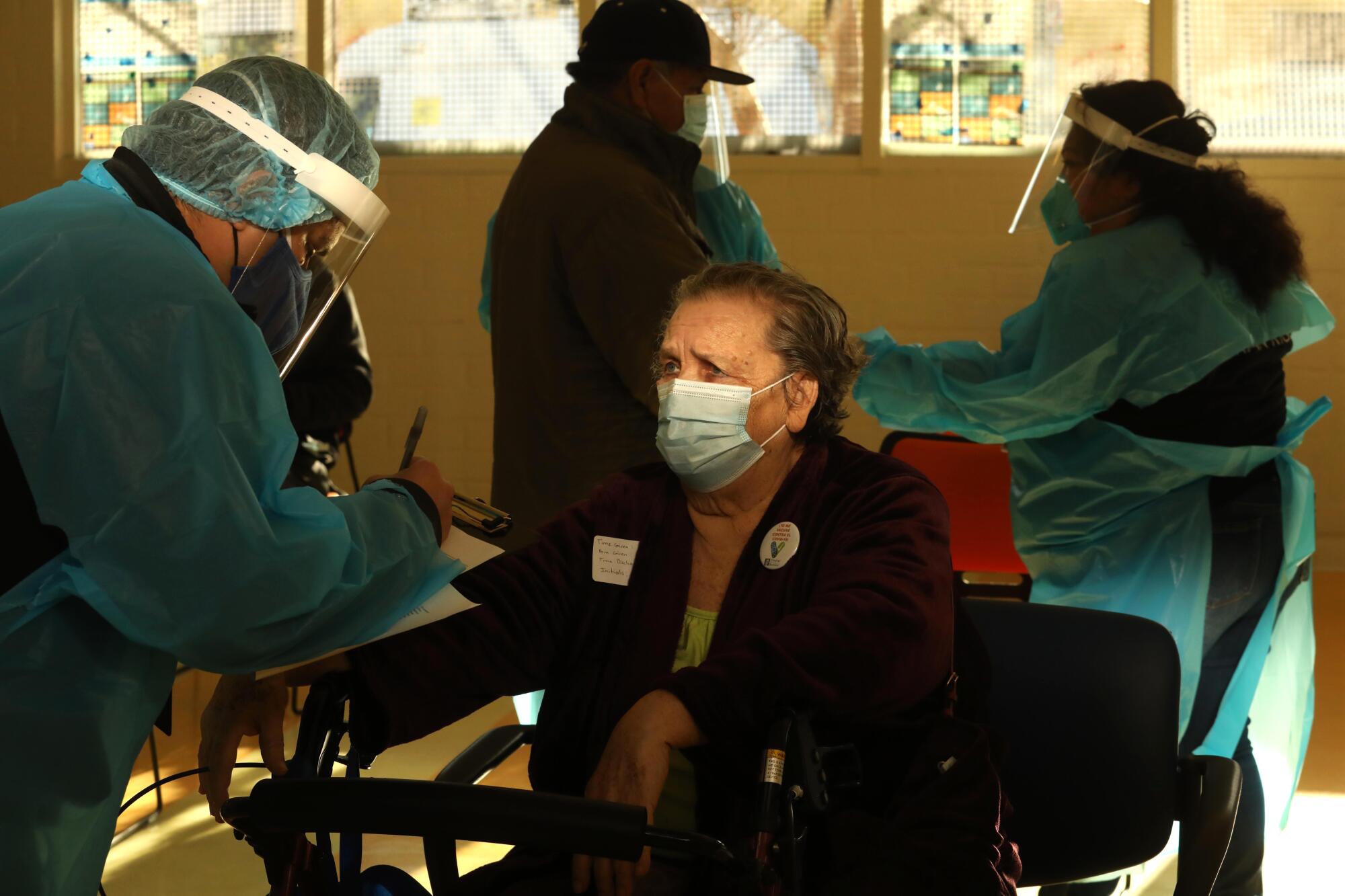
Times photographer Genaro Molina contributed to this report.
More to Read
Sign up for Essential California
The most important California stories and recommendations in your inbox every morning.
You may occasionally receive promotional content from the Los Angeles Times.
